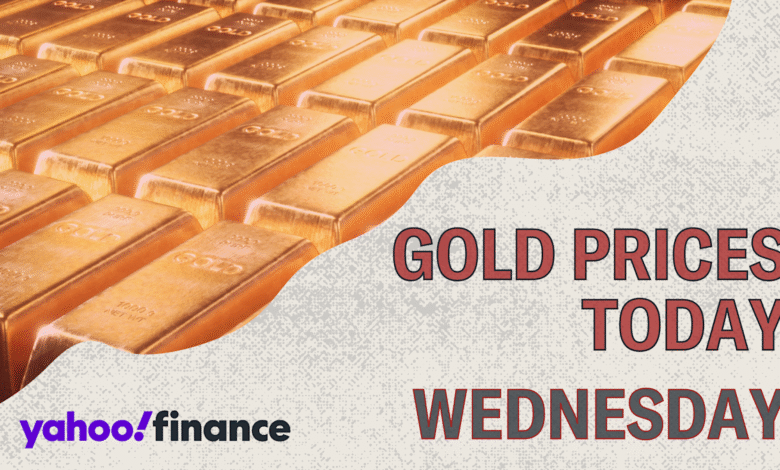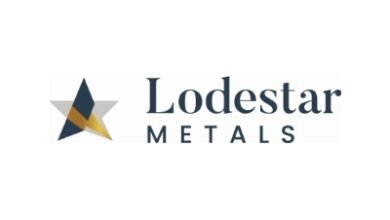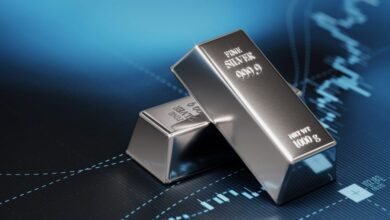Gold opens at a record $4,007 as shutdown continues

Gold (GC=F) futures opened at a record $4,007.10 per troy ounce on Wednesday, up 0.8% from Tuesday’s close of $3,976.60. This was the precious metal’s first open above $4,000.
As the price of gold eclipses $4,000, the U.S. government shutdown continues. To force a reopening, President Trump has threatened to withhold backpay for federal workers. Meanwhile, the shutdown has paused the flow of economic data that helps central bank policymakers set interest rates. Federal Reserve officials have already expressed conflicting views about the path forward. Without data, the disagreements may intensify. Recent President Trump appointee Stephen Miran has argued for lower rates, while Dallas Fed President Lorie Logan has expressed caution about rate reductions given lingering inflation.
Gold’s higher price is likely an outcome of investors seeking stability and safety amid the economic uncertainty.
The opening price of gold futures on Wednesday is up 0.8% from Tuesday’s close of $3,976.60 per ounce. Wednesday’s opening price is up 3.7% from the opening price of $3,863.50 one week ago on October 1. In the past month, the gold futures price increased 11.5% compared to the opening price of $3,594.50 on September 8. Over the past year, gold is up 51.8% from the opening price of $2,639 on October 8, 2024.
24/7 gold price tracking: Don’t forget you can monitor the current price of gold on Yahoo Finance 24 hours a day, seven days a week.
Want to learn more about the current top-performing companies in the gold industry? Explore a list of the top-performing companies in the gold industry using the Yahoo Finance Screener. You can create your own screeners with over 150 different screening criteria.
There are different ways to invest in gold, and each has pros and cons. Four common options are:
-
Physical gold
-
Gold mining stocks
-
Gold ETFs
-
Gold futures
Physical gold includes jewelry, gold bars, and gold coins. Some prefer physical gold over other forms because it’s tangible and easy to purchase. You can easily buy a gold necklace at the mall or gold bars at Costco (COST).
Intrigued by Costco’s precious metals offering? Read more here to learn key considerations for precious metals investing, the details of the Costco selection, and tips for managing your new investment.
Physical gold pros and cons
The advantages of physical gold include:
-
Readily accessible for use. If you keep your physical gold at home, it is easily available to use as a medium of exchange in an economic emergency.
-
No added volatility or ongoing fees. If you hold the gold yourself, “you eliminate counterparty risk and storage fees or expense ratios,” explained Brett Elliott, director of content and SEO at American Precious Metals Exchange (APMEX). You also avoid the added business volatility associated with gold mining stocks, as explained below.
Learn more: Take a deeper dive into the gold sector
The disadvantages of physical gold include:
-
Risk of theft or loss. Physical gold must be properly secured. You can store it at home for free, or invest in third-party storage and insurance. Remember that fees associated with storage or insurance dilute your returns.
-
Lower liquidity. Physical gold is less liquid — that is, harder to sell quickly — than stocks or ETFs. Also, if you are not using the gold as a medium of exchange, you must find a dealer and pay a markup on the sale.
Gold mining stocks are equity positions in gold miners. They can be volatile because their profits are tied to gold prices, plus these companies are heavily exposed to “geopolitical risks and management risks” according to Vince Stanzione, CEO and founder at financial publisher First Information. To manage the volatility, many investors prefer diversified gold mining funds over individual mining stocks.
Gold mining stocks pros and cons
The advantages of gold mining stocks include:
-
Greater liquidity. Large-cap gold mining stocks like Barrick Gold Corporation (B) and Franco-Nevada Corporation (FNV) generally enjoy a narrow bid-ask spread, which is a sign of liquidity. The bid-ask spread is the difference between what buyers will pay and what sellers will accept.
-
No storage requirements. Stocks live in your brokerage account and do not consume physical space. In normal times, this is an advantage. In an economic catastrophe, this could be a disadvantage if brokers or the stock market are temporarily shut down.
Learn more: The top performing companies in the gold industry
The disadvantages of owning gold mining stocks include:
-
Greater volatility. “Gold investing through gold mining companies adds another layer of risk,” explained Thomas Winmill, portfolio manager at mutual fund company Midas Funds.
SinceFrom 2000 to 2020, gold mining stocks have risen and fallen faster than gold spot prices. In recent years, gold mining stocks have trended down as gold spot prices have gained value. -
No utility as a medium of exchange. Gold mining stocks can appreciate, but they have no direct utility as a medium of exchange.
Gold ETFs are funds that track the price of gold. They can invest in physical gold stores, gold mining stocks, gold futures, or some combination of these. The largest gold ETF in terms of total assets is SPDR Gold Shares (GLD), which is backed by physical gold stored in vaults.
Gold ETFs pros and cons
The advantages of Gold ETFs include:
-
Easy to store. Like gold mining stocks, ETF shares are digital assets with no storage requirements.
-
Greater liquidity. Shares of the most popular gold ETFs, like SPDR Gold Shares (GLD) and iShares Gold Trust (IAU), are heavily traded. Steady demand makes them easy to sell.
-
Tied directly to gold prices. ETFs backed by physical gold track the spot price of gold, which is usually less volatile than gold mining stocks or gold mining ETFs.
The disadvantages of gold ETFs include:
-
Fund fees. Funds charge fees, which dilute returns over time. For context, the expense ratio of SPDR Gold Shares is 0.40%. This translates to $4 in fees annually for every $1,000 invested.
-
No utility as a medium of exchange. As with gold mining stocks, you probably cannot use ETF shares to trade for food in an economic emergency.
Gold futures are standardized contracts to purchase gold on a future date at a specific price. The contracts often represent 100 troy ounces. According to Stanzione, among gold investing options, gold futures carry “the highest risk and are best left to professional traders.”
Gold futures pros and cons
The advantages of gold futures are:
-
Leverage. You can control a large amount of gold with a low capital outlay.
-
Convenience. You don’t need to store physical gold to earn from its price changes.
The disadvantages of investing in gold futures are:
-
Risk. Leverage amplifies gains and losses. This is always risky, but especially so with an unpredictable asset like gold.
-
Complexity. The complexity of futures contracts can be off-putting to many retail investors.
Whether you’re tracking the price of gold since last month or last year, the price-of-gold chart below shows the precious metal’s steady upward climb in value.
Credit: Source link






